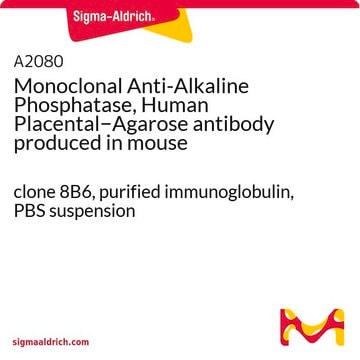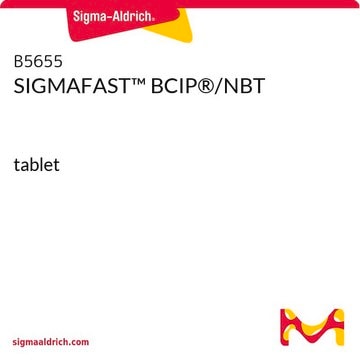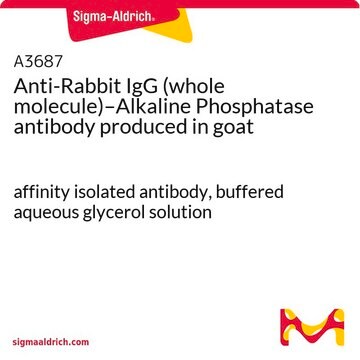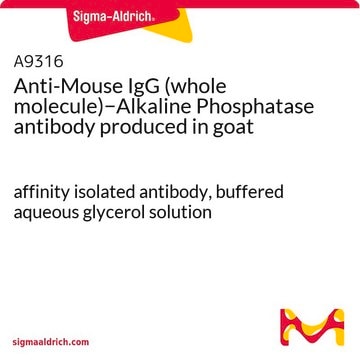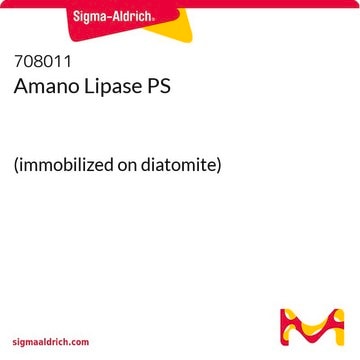A2951
Monoclonal Anti-Alkaline Phosphatase, Human Placental antibody produced in mouse
clone 8B6, ascites fluid
Sinônimo(s):
Monoclonal Anti-Alkaline Phosphatase, Human Placental, Anti-Phosphatase, Alkaline, Human Placental, PLAP
Selecione um tamanho
Selecione um tamanho
About This Item
Produtos recomendados
fonte biológica
mouse
Nível de qualidade
conjugado
unconjugated
forma do anticorpo
ascites fluid
tipo de produto de anticorpo
primary antibodies
clone
8B6, monoclonal
contém
15 mM sodium azide
reatividade de espécies
human
técnica(s)
immunocytochemistry: suitable
immunohistochemistry (formalin-fixed, paraffin-embedded sections): 1:4,000 using human placenta
immunohistochemistry (frozen sections): suitable
indirect ELISA: suitable using whole cells
radioimmunoassay: suitable using radio-immunolocalization of xenografts of human cell lines expressing PLAP in nude mice2
western blot: suitable
Isotipo
IgG2a
nº de adesão UniProt
Condições de expedição
dry ice
temperatura de armazenamento
−20°C
modificação pós-traducional do alvo
unmodified
Informações sobre genes
human ... ALPP(250)
Procurando produtos similares? Visita Guia de comparação de produtos
Descrição geral
Imunogênio
Aplicação
- enzyme-linked immunosorbent assay (ELISA)
- immunocytochemistry
- radio-immunolocalization
- western blot
- immunofluorescence
- immunohistochemistry
Ações bioquímicas/fisiológicas
Exoneração de responsabilidade
Não está encontrando o produto certo?
Experimente o nosso Ferramenta de seleção de produtos.
Código de classe de armazenamento
10 - Combustible liquids
Classe de risco de água (WGK)
WGK 3
Ponto de fulgor (°F)
Not applicable
Ponto de fulgor (°C)
Not applicable
Escolha uma das versões mais recentes:
Certificados de análise (COA)
Não está vendo a versão correta?
Se precisar de uma versão específica, você pode procurar um certificado específico pelo número do lote ou da remessa.
Já possui este produto?
Encontre a documentação dos produtos que você adquiriu recentemente na biblioteca de documentos.
Active Filters
Nossa equipe de cientistas tem experiência em todas as áreas de pesquisa, incluindo Life Sciences, ciência de materiais, síntese química, cromatografia, química analítica e muitas outras.
Entre em contato com a assistência técnica

